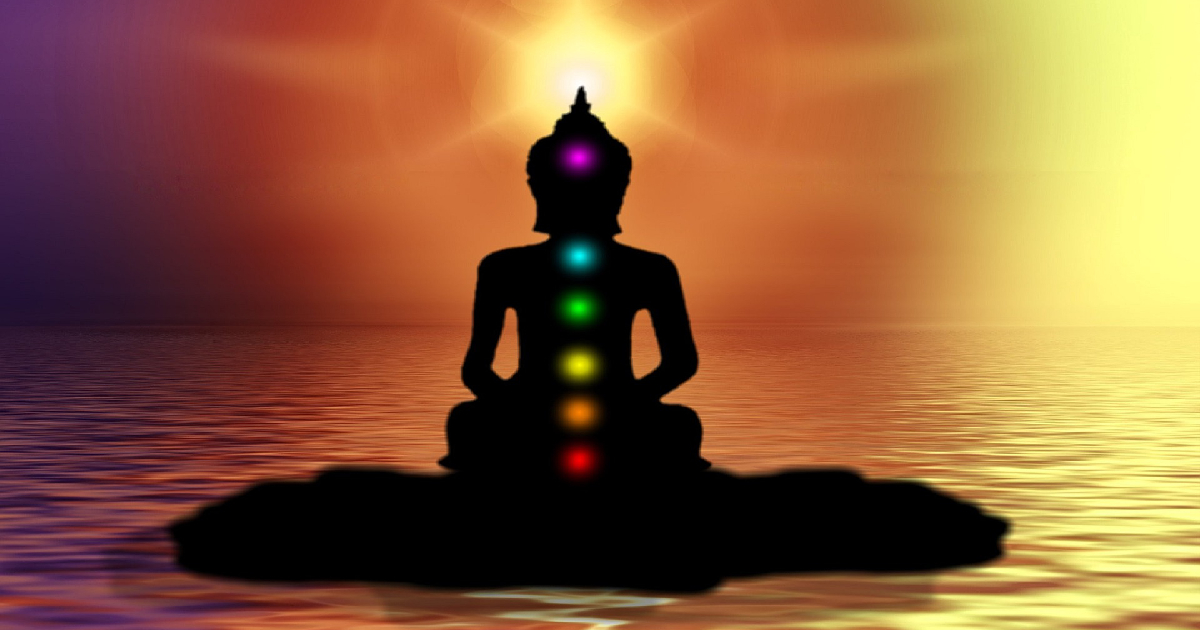As you float up in this NDE-like lucid dream, it reminds me of letting go of the physical body and ego concerns. There is no fear or clinging; rather a simple acceptance of a transition.
My thinking about the dreamed body, not the physical body, developed like this. In Hindu philosophy, there is the concept of the four states of consciousness, being awake, dreaming, dreamless sleep, and the fourth, which is an encounter or union with what is ultimately real (brahman). If there were such a thing as dreamless sleep, I was curious about what I might find it to be like. So, as an experiment, I went through a long series of attempts to eliminate the elements of dreaming while staying asleep, in order to experience dreamless sleep, if there were such a thing.
That is a long story in itself. In the process, I noticed that I could eliminate dream elements best by closing my (dreamed) eyes and concentrating my attention on the darkness that I saw. When I did that, I directed attention away from my body experience, actually from my feet first and the ground that my feet were anchored to. So as I concentrated on the darkness, my feet would detach from the ground and I would float up. Being grounded was no longer part of my experience. So I thought of floating as being partway through the process of eliminating the dream.
I also found that my lucid dreams tended to be simpler and less involved than my ordinary dreams, so that lucid dreams were naturally, for me, on the way toward dream elimination. Certainly there was no fear and I was quite used to floating.
In your writings, you mention that lucid dreaming taught you to investigate “entanglement”. When lucid dreaming, what constitutes an entanglement?
Although my lucid dreams tended to be less complex than ordinary dreams, in part because of what I chose to do, there occasionally came to be what I call ‘entanglements’ that interfered with whatever I planned to do while being lucid. The simplest example that I can give of an entanglement occurred when once I went into the air in order to fly. There was a dog below on the ground barking at me. As I flew, the dog did not stop barking. So I went down to the dog and gave it a hug and he got quiet. And thus my entanglement disappeared. Another entanglement that happened a number of times was when I got rid of the ground by flying up into the air, but when not very far up, I would get entangled by telephone wires above the street.
What lesson did these lucid dream entanglements teach you?
I would say that dreams that present entanglements tend to be dreams that I should attend to and not ignore for my own purposes. An entanglement is a sign that I should forget whatever I had in mind to do and deal with the dream as it is presented to me. This I usually did, but not always. Getting rid of entanglements let me get on with the dream, unless I soon woke up.
As you note, the presence and varieties of ‘light’ began to become a central focus of your lucid dream investigating. In one article, you focus on the experience of “stable intense lights”. To help the reader understand, can you give us a lucid dream example of “stable intense lights”?
Actually, my ‘near-death experience’ included a stable intense light, which was the fullness of light. However, I‘ll tell a more ordinary dream of May, 1983:
I dreamed I was walking around New York City and went into a tailoring shop. It was a large room in which I saw an Indian woman and a Chinese man working. I looked around the room, particularly up high at the walls and ceiling. I raised myself up into the air to look at them. My attention never went back to the lower part of the room. The room had white-washed walls with exposed timbers, and I thought, ‘Oh, this is exactly how walls look in Assam [Jorhat, where we once lived, is in the state of Assam].
Then I realized from my being in the air that I was dreaming. I started spinning around and calling ‘Jesus,’ as was my tendency at that time, and then I swung back and forth as though on a swing. Then I noticed a sun high in front of me, and I started calling ‘God,’ as I continued to spin. There were then multiple suns in a group which I faced continually, in spite of my spinning. Each sun was gold and bright, with a clearly defined circumference. One seemed to be brighter than the others.
Each was equivalent in size to the perceptual sun. There may have been six or seven of them, not in any special or obvious spatial relationship to each other. There seemed to be a confusion of rays mixed with the suns. I thought at the time that my spinning around had caused the image of the first sun that I saw to multiply. The suns stayed before me and I could scan them even as I was spinning. A couple of times I briefly felt a rope tangle with my ankles, but that was the only entanglement or interference and I did not let it totally distract me.
This experience was not one that I call the fullness of light, which I consider also to be a stable intense light. While I had a desire to call the name of Jesus or God, this was not a numinous awareness of the presence of God. It was more my idea to do this than an experience that is thrust upon me. These suns were stable intense lights in the sense that they remained visible to me the whole time, as though in front of my eyes and were scannable. They were not integrated with my dreamed body movement at all. That is, if they were representing an experience of the sun, I would have seen them only when, while spinning around, I faced them. Nevertheless, this was a special dream for me.
Studying stable intense light in your lucid dreams, what did you notice? How did you begin to think about the presence of these lights in lucid dreams? As a scholar, you note that these experiences may connect in some ways with the idea of “dreamless sleep.” So what does dreamless sleep mean? And how does the experience of stable intense light connect?
In a number of ways, stable intense lights do not show characteristics of being a part of dreams. I consider them to be beyond dreaming. Not every characteristic shows up in every experience. Please excuse the necessary brevity of this description:
- As you move your eyes in the dream, you find that they remain at a fixed scannable location in front of you, in spite of whatever your dreamed body is experiencing, even spinning around.
- Even though some resemble, in an imperfect way, a sun or moon, some do not, and their location within the visual field is not integrated with what is happening in the dream. Nor are they necessarily seen up high, but most often in front of me. Certainly, the seeing of the lights was not spatially integrated with my spinning around.
- They sometimes appear outside the perceptual visual field. A dream is percept-like and thus seeing is usually limited to the perceptual visual field, that is, to the size and shape of the visual field as it is when we are awake. A stable intense light can appear beyond this area. For example, an intense peripheral light has appeared on a number of occasions seemingly above my head, in which case in an ordinary dream or while being awake, seeing such a light should be impossible. My head would lie in the way of seeing it
- The same type of light may appear during different dreams at the same location. For example, a white blank area has appeared a number of times on the left side of where I tend to look.
- Sometimes I continue to see the light for a short time after I wake up. It appears in the same location and I can still scan it as I did in the dream.
Because these lights do not normally simulate perceptual experience, as dreams do, and are not integrated with what is happening image-wise in the dream, I consider them to be other than dream imagery. For example, in the same manner, when light coming through my window or the sound of an external siren becomes part of the dream, I consider it not to be dream imagery.
If I hear my son say ‘The newspaper hasn‘t come yet’ and he speaks from outside my dream, I do not regard his words to be part of the dream. If I concentrate on the visual image of the dream and the dream breaks up and become geometric imagery, I consider the visual image to be no longer dream imagery, even though I am dreaming.
Since they are not dream imagery and I am still asleep, they are, in a sense, “dreamless” imagery. In Tibetan Buddhism, the subjective experiences of dreamless sleep are described only visually, that is, in terms of light and darkness (rather than, say, in terms of body imagery) and are said to be achieved through meditation during lucid dreaming. The dreamless images are said to be signs of dreamless sleep, which means that one is approaching the goal of the clear light. The Tibetans, however, say nothing, at least that I have found, about the lights having a fixed scannable position within the range of one’s eye movement.

Image by Karin Henseler from Pixabay
Help us understand: when in dreamless sleep and in „the light’, where has the experiencer arrived, according to dream yogis? Nirvana? Non-duality? A layer of pure awareness?
I try not to speculate too much. I‘m willing to say that my stable intense lights are ‘dreamless,’ but I don‘t necessarily see the same thing that the Tibetans refer to as the signs of dreamless sleep. The Tibetan yogis talk about approaching the void or emptiness that underlies all things. They reach what they call the clear light. How the clear light relates to what I call the fullness of light, I don‘t know. It is difficult to compare two subjective experiences if you‘ve had only one of them.
I would not call the experience of any of the stable intense lights, including my fullness of light as an experience of nonduality. Floating, light, darkness, visual or body image, or any action all create a dualistic experience. In nonduality, there would be only being, only one thing, and no seeing or feeling of another.
At least that interpretation of ‘nonduality’ seems more in harmony with what the Hindus or Buddhists consider nonduality to be, and that is what I tend to understand ‘nonduality’ to mean. If I experienced pure awareness, I wouldn‘t be aware of any objects of consciousness such as light, body, thought, or darkness. Nonduality or pure awareness would be ‘not this, not this.’
George, thanks so much for taking the time for this interview. Any parting thoughts for lucid dreamers?
Thank you for the conversation. I wish all you lucid dreamers well. Let‘s try to be both generously open-minded and seriously critical.


